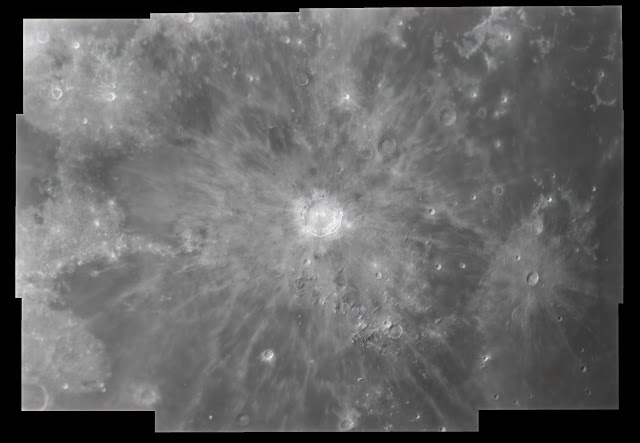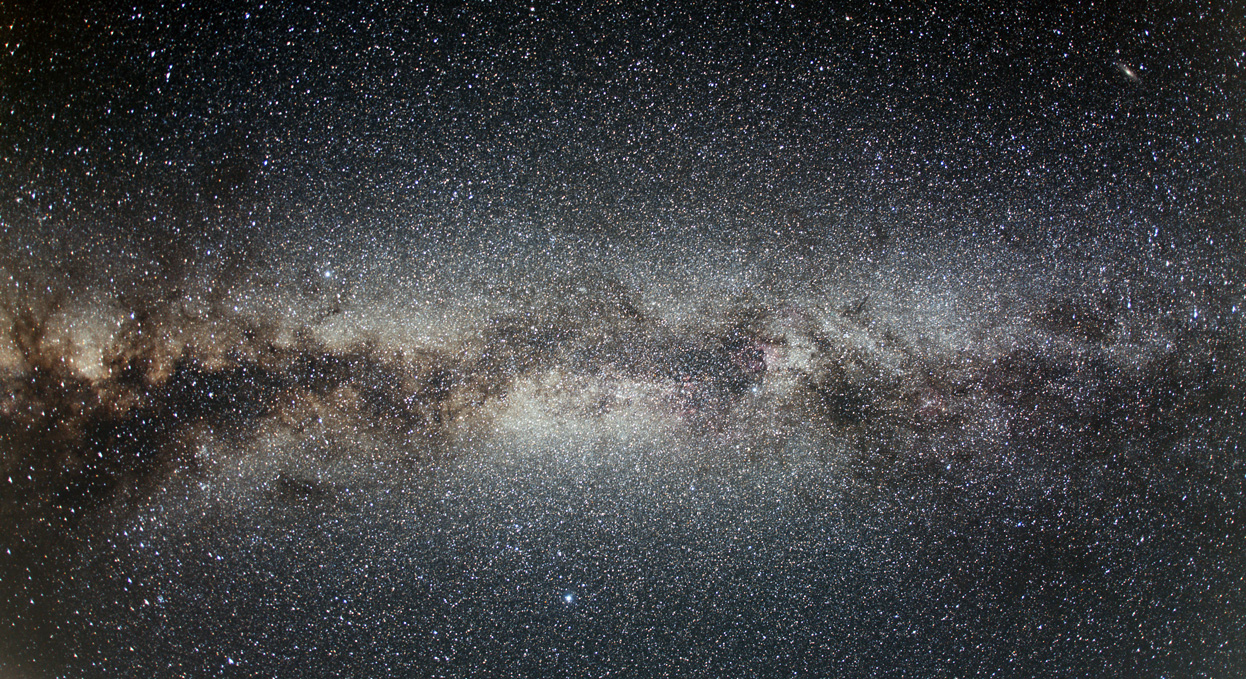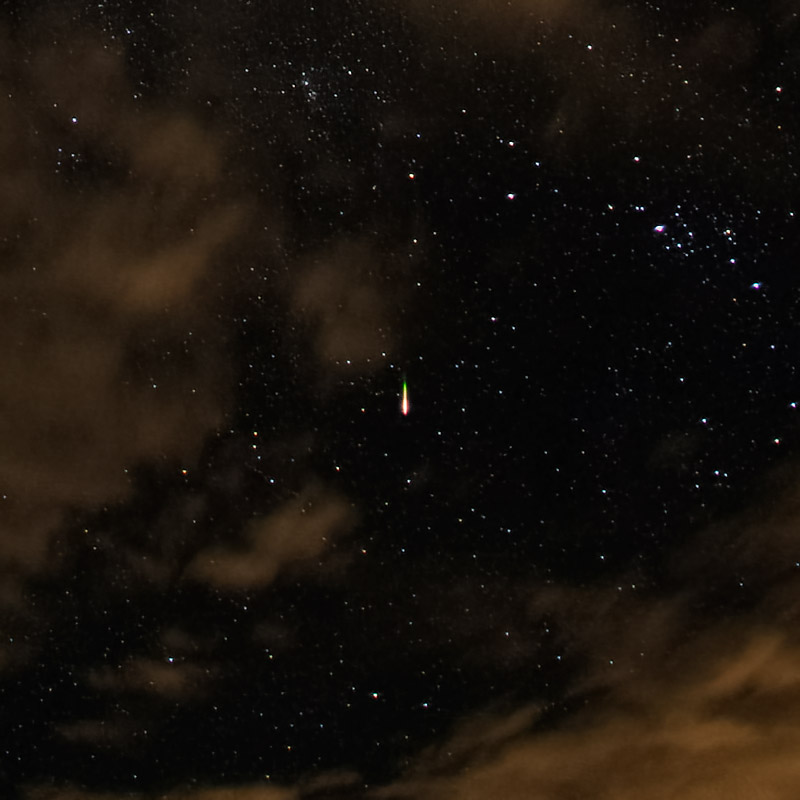managed to have clear skies, decent seeing and the next morning off enabling me to catch saturn at the exact time of opposition and within minutes of local transit:
 |
Saturn 8/27/23 08:16 UTC
Eastbluff, CA |
here's a wider view with the moons.  |
Saturn and Moons
8/27/23 07:54 UTC
composite image |
none of the bright moons were blocked by saturn's glare, though several were out of the field. had i known i would have captured a wider mosaic to catch them all.
Dew soaked imaging rig:
camera ZWO ASI 290MC with IR block
ZWO ADC
celestron 11" Edge HD, no barlow
East Bluff, CA
close up:
16 x 90 second captures, 1 x 422 sec
gain 351, exposure 1.988- 8.904ms, 77%-29% histogram, 100-200 fps
wide view:
composite
60 sec gain 351, exposure 100ms, 100% histogram, 10fps
60 sec gain 351, exposure 9.497ms, 89% histogram, 24 fps
captured with firecapture
stacked in autostakkert (upsampled 1.5x)
combined in winjupos
processed in registax and photoshop
notes:
image snapped to focus on titan
meridian flip in past created tube currents in perfectly calm scope
cooled down aiming at planned imaging location in sky
fire capture ADC adjustment worked really well (custom button assigned for easy access)
blow drier much better than dew heater
dramatic increase in histogram after use mid capture
best images initial or after blow drier
shorter exposure better for 30% histogram
(80% histogram exposure limits capture rate)
longer imaging time better
7 minute capture slightly worse after winjupos derotation
(required debayering of long AVI in PIPP)
but still better than 90 second.
should increase to 120 for saturn
needed to set LD to .5 in winjupos
appendix:
3x no fan
0757
FPS (avg.)=39
Shutter=8.904ms
Gain=351 (58%)
Histogramm=77%
0758
FPS (avg.)=112
Shutter=8.904ms
Gain=351 (58%)
Histogramm=74%
0800
FPS (avg.)=106
Shutter=8.904ms
Gain=351 (58%)
Histogramm=71%
3x fan on (no clear difference)
0802
FPS (avg.)=109
Shutter=8.904ms
Gain=351 (58%)
Histogramm=69%
0804
FPS (avg.)=106
Shutter=8.904ms
Gain=351 (58%)
Histogramm=72%
0806
FPS (avg.)=108
Shutter=8.904ms
Gain=351 (58%)
Histogramm=72%
3x short exposure/low histo (no clear difference)
0808
FPS (avg.)=199
Shutter=4.754ms
Gain=351 (58%)
Histogramm=42%
0810
FPS (avg.)=194
Shutter=4.754ms
Gain=351 (58%)
Histogramm=38%
0812
FPS (avg.)=194
Shutter=4.754ms
Gain=351 (58%)
Histogramm=36%
3x saa after blow drier (clearly better)
0821
FPS (avg.)=192
Shutter=4.754ms
Gain=351 (58%)
Histogramm=72%
0824
FPS (avg.)=192
Shutter=4.754ms
Gain=351 (58%)
Histogramm=71%
0826
FPS (avg.)=171
Shutter=4.754ms
Gain=351 (58%)
Histogramm=70%
3x shorter exposure.low histo
0828
FPS (avg.)=207
Shutter=1.988ms
Gain=351 (58%)
Histogramm=31%
0829
FPS (avg.)=217
Shutter=1.988ms
Gain=351 (58%)
Histogramm=32%
0831
FPS (avg.)=218
Shutter=1.988ms
Gain=351 (58%)
Histogramm=33%
0833
FPS (avg.)=215
Shutter=1.988ms
Gain=351 (58%)
Histogramm=30%
0843 long run
FPS (avg.)=209
Shutter=1.988ms
Gain=351 (58%)
Histogramm=29%






























